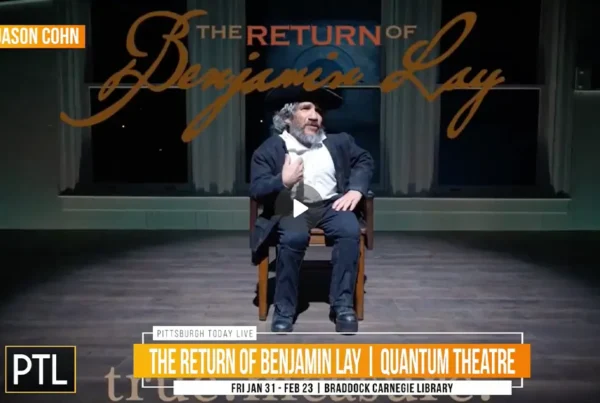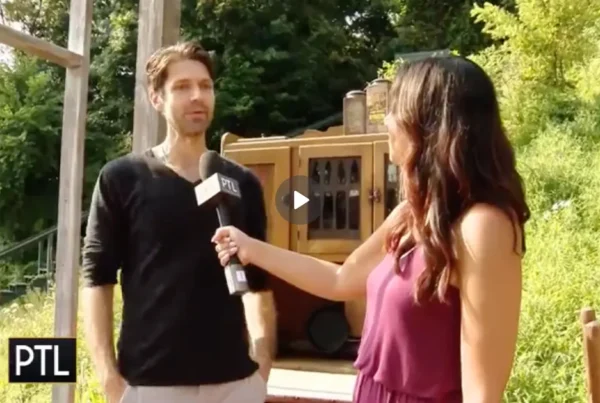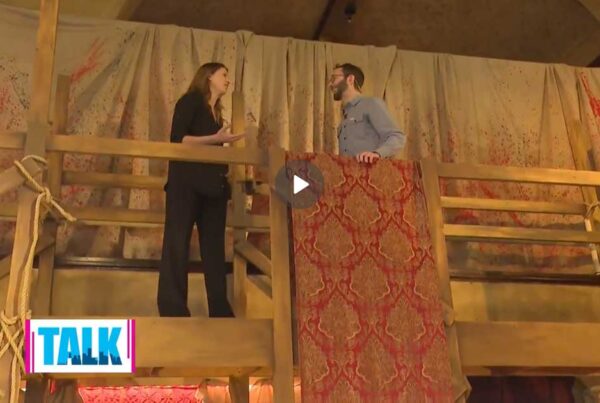Pittsburgh CrossCurrents – The Pittsburgh International Festival of Firsts comes around once every five years and I’ve seen virtually everything that its sponsor, the Pittsburgh Cultural Trust, has had to offer. I feel like it’s taken me around the world and transformed the way I looked at dance in a cross-disciplinary, cross-distance way, with art and theater from an astonishing number of foreign countries.
I began my journey this year at home, with Pittsburgh’s own Quantum Theatre and its production of Chatterton, which actually turned out to be a mini-journey all its own at Trinity Cathedral Downtown (across from the Duquesne Club on Sixth Avenue).
The opening night audience gathered for a glass of hard cider (or water), free to meander among the graves in the churchyard, holding Native American, English, French and American leaders. It was ghostly in its own right, but we were about to have yet another eerie experience inside.
Then we collectively stepped into the historic space itself to get instructions from artistic director Karla Boos. We had received cards that would split us into three groups.
Following her talk, we assembled behind our guides and immediately began scurrying up and down stairs (there is an elevator as well) and in and out of back rooms where various scenes unfolded before our eyes.
It was yet another epically grand Quantum production — is there any other? — where a number of themes swirled though the recesses of the church. The story itself is an original work based on Peter Ackroyd’s book about Thomas Chatterton, an 18th century poet who committed suicide at age 17 and ultimately became a heroic figure in Romantic art.
It was a century later when his name was thrust into a second round of fame. Henry Wallis painted The Death of Chatterton, which was modeled by Victorian author George Meredith.
But it is a second painting, a portrait of an older Chatterton, that sparked a mystery with many questions to be answered, questions that we still have today. What is Truth? Or Reality? What is Fake?
It traverses time, from the present back to the 18th and 19th centuries, sometimes darkly Dickensian, sometimes comedic, always intriguing, mysterious at times. Don’t expect to understand or hear it all.
How they put it all together is anyone’s guess and it would take several viewings to satisfy my curiosity about it all. The cast of 11, led by people like theatrical icon Martin Giles, who also partnered in writing Chatterton with Karla Boos, and the inimitable Helena Ruoti, took on multiple roles with theatrical skill and flair.
Behind the scenes, so to speak, Stephanie Mayer-Staley created rooms with tons of atmosphere, Robert C.T. Steel made highly detailed costumes to delineate various eras, C. Todd Brown lit the church niches with grace and the astonishingly talented Joe Seamons created projections, from flying doves to a church facade to a fire that boggled the imagination.
There’s a bonus (as if it was needed) with Chatterton. A local chef provides a sit-down meal at intermission. Ours was Kate Romane of Black Radish Kitchen, featuring cucumber salad with creme fraiche, meatballs and hot sausage, polenta with fresh corn and basil and white beans with sage. Light, delicious fare with wonderful conversation as we sat around a communal table.
It gave us renewed energy as Chatterton switched gears and put us in new groups for the second act and that Seamons’ finale.
Like a giant jigsaw puzzle evolving before our ever-moving eyes, we gladly immersed ourselves in this mobile form of theatricality, simultaneously becoming a part of history and the current political climate as our own questions began to dance through our minds.




